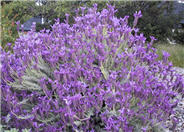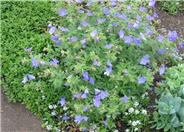
Common name:Strawberry Madrone, Marina Strawber
Botanical name:Arbutus 'Marina'
The 'Marina' has gorgeous bark, with leaves that are smaller and not as glossy as Pacific Madrone. Its flowers are pink, borne in pendant clusters in the summer. The fruit is large, red and quite ornamental. The plant should be grown in sun to part shade, with little or no summer watering when established. The 'Marina' prefers good drainage. -Monterey Bay Nursery

Common name:Kangaroo Paws Tall Red
Botanical name:Anigozanthos flavidus 'Tall Red'
Anigozanthos flavidus 'Tall Red' is a perennial with dark green, smooth, swordlike evergreen leaves. Produces spikes of striking, fuzy, tubular flowers in yellow-green tinged with red that are curved at the tips. The flowers attract hummingbirds. Flowers bloom from late spring to fall if spent flowering spikes are cut to the ground. Makes for a good cut flower.

Common name:California Pepper, Mission Pepper
Botanical name:Schinus molle
The California Pepper is a fast-growing evegreen tree that will mature to a height of 25-40' and as wide. Its bright green leaves are divided into many narrow, 1 1/2-2" long leaflets. Naturalizes.

Common name:New Zealand Flax
Botanical name:Phormium tenax
New Zealand Flax is a large, bold plant with stiffly vertical, sword-like, green leaves that arise from its base. It should be grown under full sun for best color. Varieties will offer different growth habits and leaf color.

Common name:Wheeler's Dwarf Pittosporum
Botanical name:Pittosporum tobira 'Wheeler's Dwarf'
This handsome dwarf form of the Pittosporum tobira grows into a low, dense mound that is covered with glossy, evergreen foliage.

Common name:Century Plant, Maguey
Botanical name:Agave americana
Fast growing to about 6-10' tall x 8-13' wide. Wide, grey leaves have stiff terminal spines and recurved teeth on margins. Prefers full sun and well-drained situations. Prone to agave snout weevil which will eat the roots and heart out. After blooming, which could take several years. it will die but will send up new pups from around the base. Some people are allergic to the sap. Removal is difficult if unwanted. Naturalizes.

Common name:Spanish Lavender
Botanical name:Lavandula stoechas
This dense shrub grows 2-3 ft. tall with blue gray foliage and deep purple flowers that have large showy bracts near the top of the spikes. It is drought tolerant . - Cornflower Farms

Common name:New Zealand Flax
Botanical name:Phormium tenax 'Atropurpureum'
Phormium tenax 'Atropurpureum' is an evergreen perennial. Big, dramatic plant composed of many swordlike, stiffly vertical leaves (9 ft. long, to 5 in. wide) in a fan pattern. Leaves are purple red. Flowers stems reach high above leaves, bearing clusters of 1-2 in. blossoms in dark red to yellow.

Common name:Fountain Grass
Botanical name:Pennisetum alopecuroides
Pennisetum alopecuroides is a perennial grass. Bright green, 3-4 ft. foliage clumps are topped by pinkish plumes in early summer. Leaves turn yellow in fall, brown in winter.

Common name:Lamb's Ear
Botanical name:Stachys byzantina
This tiny, herbaceous shrub will grow less than 1' tall and has medium-size, grayish/green leaves with blue and lavender flowers that bloom in the spring.

Common name:Kleinia
Botanical name:Senecio mandraliscae
This succulent perennial will grow to about 1.5' tall and 2' wide. It has curved, blue/gray leaves that are about 3.5" long and very slender. Frost-tender.

Common name:Red Fringe Flower
Botanical name:Loropetalum chinese 'Rubrum'
Red Fringe Flower is a 6-12' shrub with arching branches and light green and reddish leaves .

Common name:Johnson's Blue Cranesbill
Botanical name:Geranium 'Johnson's Blue'
This herbaceous perennial is a favorite among geranium lovers. It grows up to 18" tall and 2'-3' wide. Saucer-like violet-blue flowers bloom from spring through fall. The leaves are bright green, finely cut and quite divided. Plant in full sun or half sun. Looks good in rock gardens, borders and containers.
| Designer: Barbara Jackel Landscape Dsgn | Garden Variety |
Photographer: GardenSoft |
Soils and Compost:
Physical weed control, including mulching, or hand removal protects the watershed from harmful chemicals.
Water Saving Tip:
The water needs of plants and lawns change dramatically throughout the year.
Visit the watering guide in the watering tips section for more information.
Integrated Pest Management:
Drip and other smart irrigation delivers water directly to roots, allowing no excess water for weeds.

